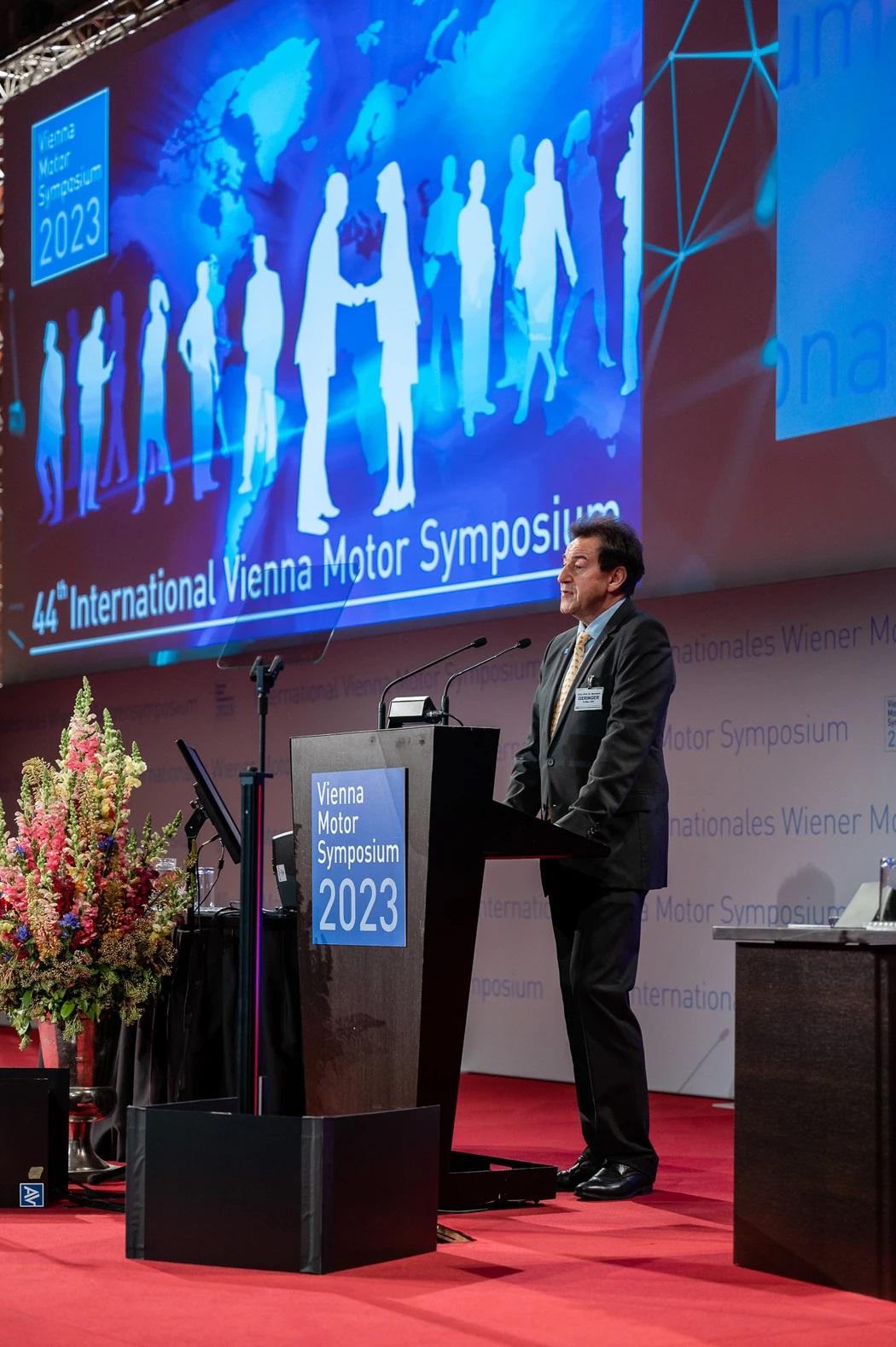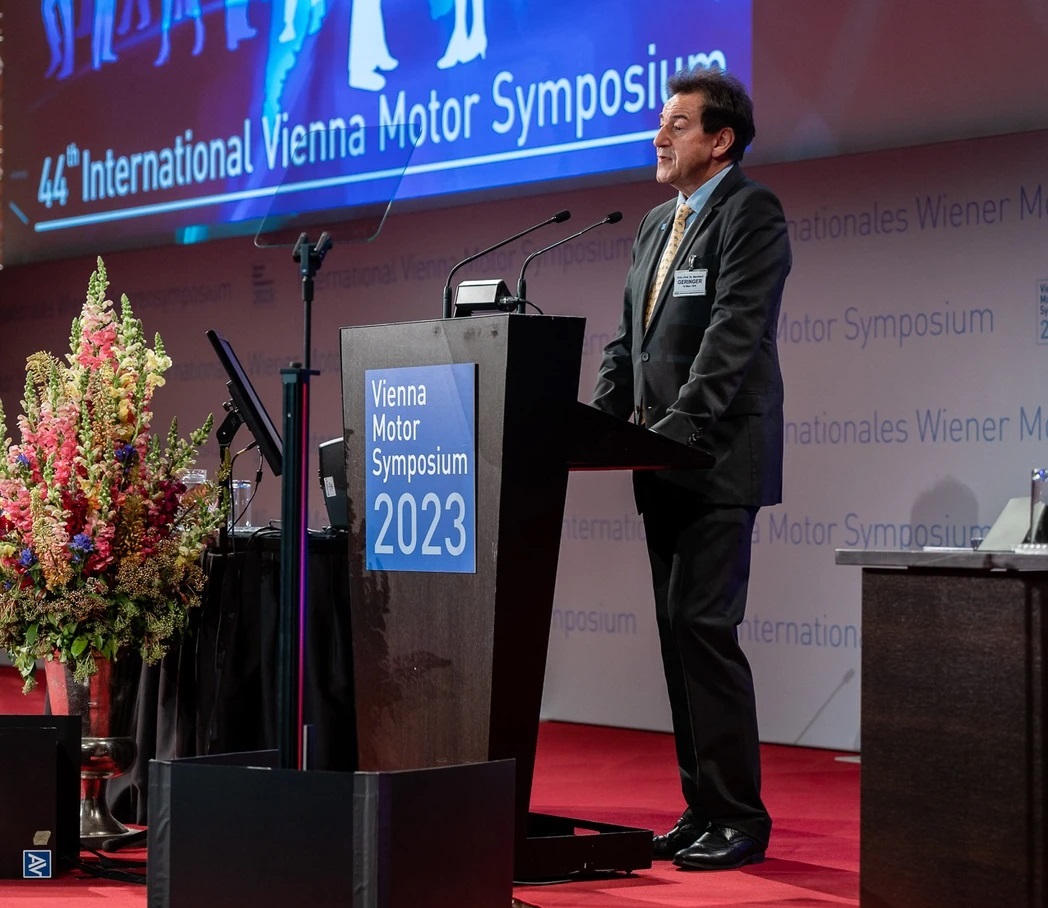Automotive: Experts say Carbon-Neutral Fuels are the answer
The near 1.5 billion liters of fossil fuels used daily worldwide must be replaced by carbon-neutral fuels by 2050 if we are to achieve the climate goals.
More than 1,000 experts at the 44th International Motor Symposium in Vienna discussed the global strategies required to achieve these targets.
The potential for producing renewable energy is particularly great in regions such as North Africa, the Middle East, Chile, or Australia.
An attractive option for the long-distance transportation of eco-electricity are so-called e-fuels also known as synthetic fuels.
Once transported, these can be turned back into electricity for use in car batteries.
As Bernhard Geringer, Head of the Institute of Powertrains and Automotive Technology at the Vienna University of Technology summarized: “To reach true climate neutrality, one must look at the entire system, from sustainable energy generation to the vehicle’s wheel. Focusing only on electricity or even supposedly inefficient e-fuels is not enough.”

Fuel studies presented at the symposium by Ulrich Kramer, technology expert for renewable fuels at Ford, also demonstrated that the current strategy is unlikely to achieve global climate targets. Overall, from the production of the required energy through to the manufacturing and recycling of a vehicle “electric only” vehicles would produce 39 percent more greenhouse gases by 2050 than a mix of various climate-neutral technologies, which also have the advantage of being considerably cheaper.
Kramer believed that the decisive factor in achieving the climate targets by 2050 was the speed of conversion to climate-neutral vehicles: “The battery-electric approach is not fast enough, if only because of various technical bottlenecks such as the slow expansion of the energy grid, or insufficient supply of cobalt for battery production.”
Full Article
Climate neutrality for cars needs a holistic approach
The nearly 1.5 billion liters of fossil fuels used daily worldwide must be replaced by carbon-neutral fuels by 2050 if we are to achieve the climate goals set by international policymakers.
More than 1,000 experts at the 44th International Motor Symposium in Vienna discussed the global strategies required to achieve these targets.
The potential for producing renewable energy is particularly great in regions such as North Africa, the Middle East, Chile, or Australia. An attractive option for the long-distance transportation of eco-electricity are so-called e-fuels (electricity-based fuels) also known as synthetic fuels. Once transported, these can be turned back into electricity for use in car batteries. There is a disadvantage in that the re-conversion process used for car batteries is not efficient, however an interesting alternative could be in their use to power combustion engines or aviation turbines.
Less water needed for e-fuels than for bio-fuels
E-fuels are produced using green electricity and water that is broken down into hydrogen and oxygen in an electrolyzer. According to Alba Soler, an expert for renewable energy sources at Concawe (Brussels), only a few liters of water are required for each liter of e-fuel, compared to the thousands of liters for each liter of bio-fuel produced from cereals. In arid regions, one would have to desalinate sea water for this purpose, which would account for one percent of the production costs for e-fuels.
The green hydrogen produced can be combined with CO2, for example, from industrial emissions or from the air and further processed to green gas such as methane, or to climate-neutral liquid fuels (e-gasoline, e-kerosene, e-diesel) . These e-fuels can then be transported by ship or pipeline to Europe at a low cost. The transport of liquid green hydrogen, on the other hand, is significantly more expensive. The conversion of hydrogen to liquid e-fuels, however, is energy-intensive. According to Pierre Oliver Calendini, Head of the Aramco Fuel Research Center in France, a unit of e-diesel requires twice the energy needed for the same amount of green hydrogen. Although this results in a corresponding drop in efficiency, solar yield in sunny regions is not a limitation.
Interest in e-fuels on the rise
Ever since the EU agreed to exempt e-fuels from the 2035 ban on new sales of combustion-engine cars, interest among potential producers has risen dramatically. Thorsten Herdan, Managing Director of HIF EMEA, believes that the small e-fuel demonstration facility built by HIF Global and Porsche in the South of Chile contributed significantly to this decision. The group intends to begin mass production of e-fuels as of 2026.
Herdan sees a mass market for e-fuels in heavy transport, shipping, and aviation, although less so in passenger cars. In terms of cost projections, annual production of 100,000 to 500,000 liters of e-gasoline for at least 15 years, could see production costs drop to one euro per liter for e-gasoline in five to ten years’ time. The likelihood would be even greater if matched by a price drop in inexpensive green electricity to prices starting at 1 cent per kilowatt hour.
HIF Global plans to invest 50 billion dollars in the development, construction, and operation of facilities around the world. Although e-fuel production in the EU makes little sense from HIF’s perspective, the situation is different for Aramco. As a result of the EU’s new decision on e-fuels, the world’s largest oil group, based in Saudi Arabia, is now planning a small facility in Europe.
Gasoline still in great demand for used vehicles Another speaker at the symposium, Mats Hultman of Finnish energy group Neste, was also firmly committed to the use of alternative fuel sources. Although Neste itself does not yet make e-fuels, the group claims to be the world’s largest producer of renewable fuels, with an annual output of 3.3 million tons. Neste exclusively uses scrap and waste like used cooking oil, but no cereals. Compared to fossil diesel, these fuels can reduce greenhouse gas emissions by 75 to 95 percent, depending on which raw materials are used and whether energy generation is factored in in the CO2 footprint. However, he sounded a note of caution in terms of reaching the current targets without significant change: even if all new vehicles in the EU were to be fully electric by 2035, he projected that there would still be great demand for liquid fuels for used vehicles ,
More greenhouse gas emissions through “electric only” Fuel studies presented at the symposium by Ulrich Kramer, technology expert for renewable fuels at Ford Werke GmbH in Cologne, also demonstrated that the current strategy is unlikely to achieve global climate targets. Overall, from the production of the required energy and materials through to the manufacturing, sale, and recycling of a vehicle – the so-called life cycle or cradle-to-grave assessment – “electric only” vehicles eg in the EU would produce 39 percent more greenhouse gases by 2050 than a mix of various climate-neutral technologies, which also have the advantage of being considerably cheaper. As demonstrated by Martin Rexeis of the Institute of Thermodynamics and Sustainable Propulsion Systems at the Graz University of Technology, energy generation and delivery in particular have a major climate impact. Unfortunately,
Electric only is too slow Ulrich Kramer of Ford believed that the decisive factor in achieving the Paris climate targets by 2050 was the speed of conversion to climate-neutral vehicles: “The battery-electric approach is not fast enough, if only because of various technical bottlenecks such as the slow expansion of the energy grid, or insufficient supply of cobalt for battery production. Volkswagen expects battery storage demand worldwide to increase by as much as sixfold by 2030 as compared to 2022.”
It is high time for new legislation. Ramping up production of e-fuels or renewable fuels also needs time, as Thorsten Herdan of HIF showed. Furthermore, it is important to factor in the long periods of development and use of eg ships or aircraft, said Lukas Mauler, Senior Manager at Porsche Consulting GmbH.
No climate-neutral technology is perfect
According to Mauler, none of the potentially climate-neutral technologies is perfect. The requirements for deep-sea transport are completely different than those of road transport. For instance, a large container ship would need batteries worth 400 million US dollars with a capacity of six gigawatt hours and weighing around 20,000 tons to travel for five days on high seas. One would need 100 windmills close to the harbor to recharge the ship’s batteries in just 24 hours.
Ultimately, the choice of powertrain not only depends on efficiency, but also on whether an adequate infrastructure is in place. This is equally true for electricity, e-fuels, or hydrogen, as Mauler and many other experts agree.
From energy generation to wheel As Bernhard Geringer, Head of the Institute of Powertrains and Automotive Technology at the Vienna University of Technology summarized: “To achieve true climate neutrality, one must look at the entire system, from sustainable energy generation to the vehicle’s wheel. Focusing only on electricity or even supposedly inefficient e-fuels is not enough: a windmill in Chile producing three times as much hydrogen as in Central Europe by far offsets the disadvantages of energy conversion.”
